The Budd Co. and Chicago, Burlington & Quincy went hand in hand in building the streamlined Zephyr fleet, though the Midwestern railroad wasn’t the only customer to the car manufacturer. By 1941, the company produced nearly 500 stainless-steel passenger cars to more than a dozen railroads. The 1939 Silver Meteor and 1941 Empire State Express rolled out new equipment from the Philadelphia plant. But which Budd-built passenger trains were considered prominent to the company and overall industry (excluding Zephyrs)?
The 1937 Super Chief
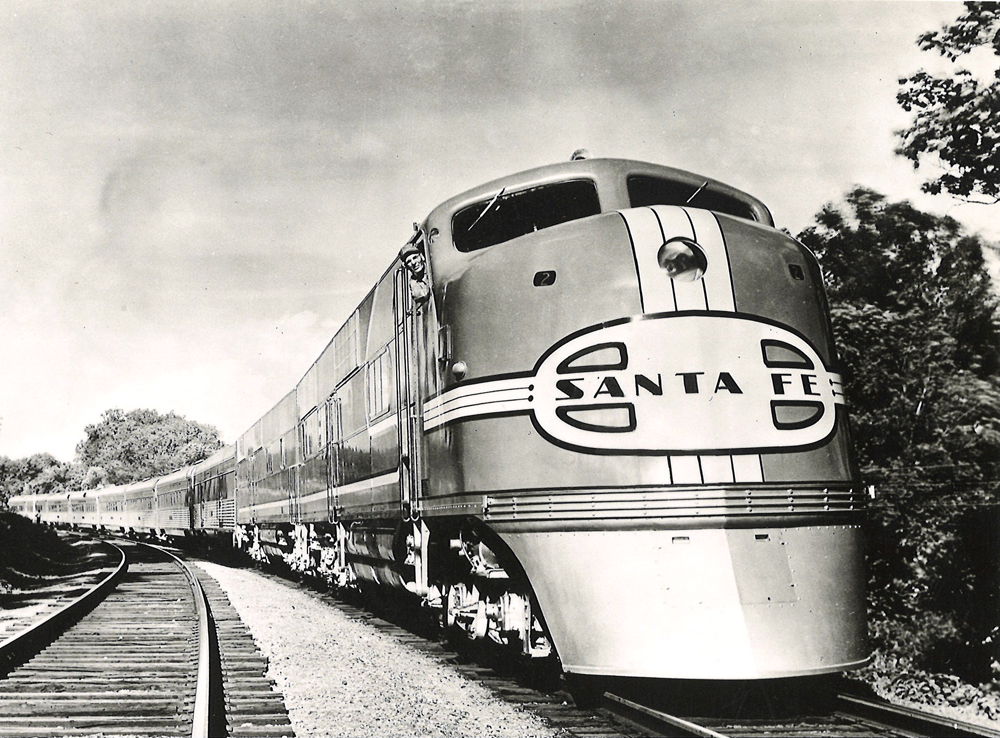
Budd’s earlier streamliners were articulated trainsets with cars semi-permanently connected. That all changed in 1936 with the company constructing its first conventional coach for the Atchison, Topeka & Santa Fe Railway. The 52-seat chair car of stainless steel was the test bed for what would become something “Super.” Complementing the Chicago-Los Angeles, all-Pullman Chief, the 1936 debut of the Super Chief fostered a high-speed, extra-fare service once a week with heavyweights.
The train would evolve the following year into the lightweight streamliner, consisting of eight conventional Budd cars while pulled by Electro-Motive Corp. E1 diesels in the new “warbonnet” scheme. The Super Chief eventually became the railroad’s daily flagship while adding additional Pullman and American Car & Foundry cars throughout its Hollywood-like stardom. However, it was the 1937 incarnation that helped set the stage for lightweight passenger railroading in the U.S., with Budd becoming one of the key players.
The original Rock Island’s Rockets
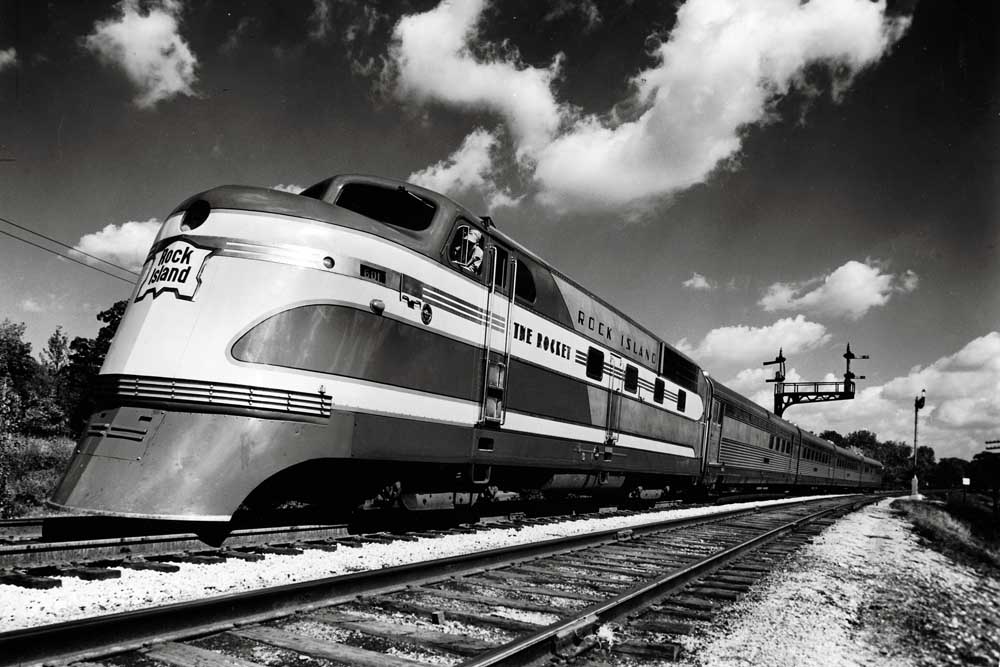
I’ll admit in cheating a bit by listing five trains under one section. Though the story of how these prewar streamliners rocked an underdog railroad from hardship is too good to pass up on. The Chicago, Rock Island & Pacific, better known as the Rock Island, had 30 years of mismanagement and a tarnish image catch up during the Great Depression. In the railroad’s second bankruptcy by 1936, Edward M. Durham was brought in as chief executive officer with the goal of an unlikely turnaround. The all-new Rockets would play a starring role.
In a mix of prior and fore-coming designs, an initial 20 cars for six articulated trainsets were ordered from Budd while six separate TA diesel locomotives were built by EMC. Within a three-month span in late 1937, the new trains would take to the routes under the following: Texas Rocket, Fort Worth-Houston; Peoria Rocket, Peoria, Ill.-Chicago; Des Moines Rocket, Des Moines, Iowa-Chicago; Kansas City Rocket, Kansas City-Minneapolis; and the Denver Rocket, Kansas City-Denver before cutting service to Oklahoma City, Okla. Success led to later Rockets while deviating from the use of solely Budd cars. Looking back on what the originals did in the Rock Island’s brief revitalization, they turned a profit and helped restore the railroad’s image.
The 1956 El Capitan
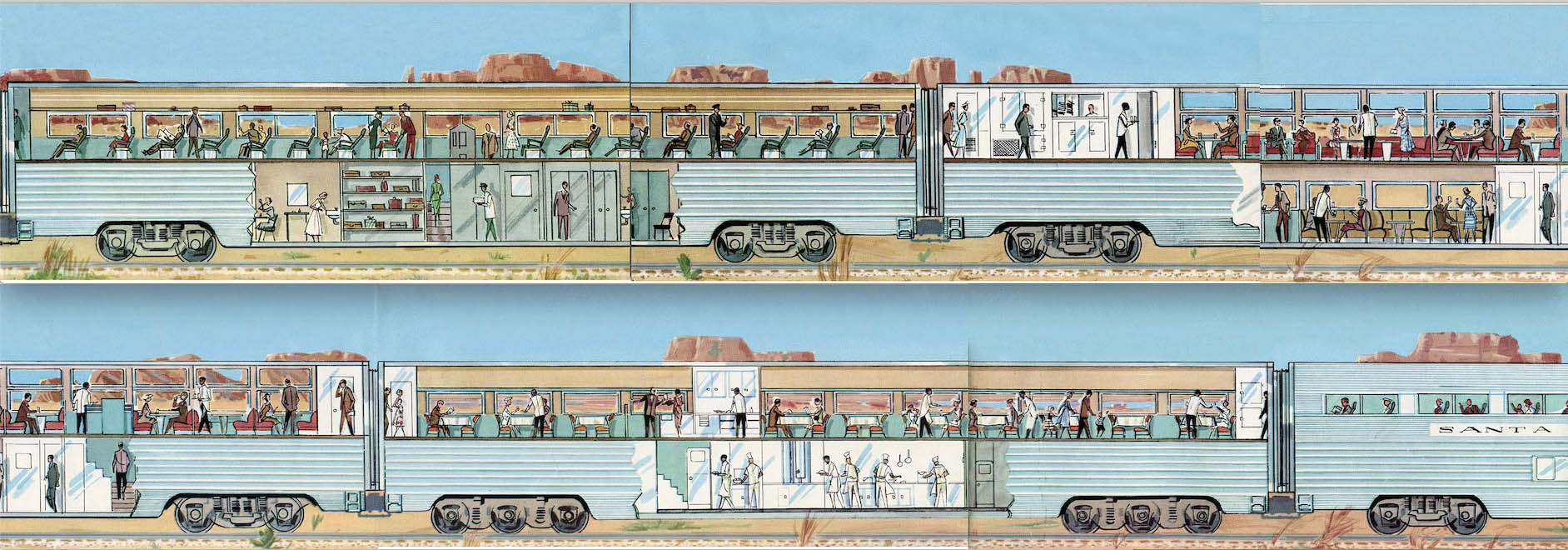
The success of the Santa Fe’s Super Chief gave way to the inauguration of the El Capitan on Jan. 22, 1938. Initially operating on a twice-weekly basis, later daily, the all-coach service complemented its high-end counterpart between Chicago and Los Angeles. The train originally consisted of similar lightweight cars, though a new level of reequipping would take place 18 years later. Combining the high capacity of its double-deck, gallery commuter car with accommodations of its full-length Big Dome, Budd’s new Hi-Level passenger cars emphasized upper-level seating for improved, long-distance coach travel.
The fleet of coaches, diners, and lounges were placed into service on the El Capitan in 1956 and saw immediate success. Even after the Santa Fe backed out of the passenger traffic for Amtrak to take the reign in 1971, the Hi-Levels played a significant role in the new carrier’s growth and identity. Most of the equipment continued in regular use until the 1990s with the lounges being the last to retire from Amtrak in 2018. Of course, lest we forget the inspiration toward the 1970s- and 1990s-built Superliners.
The Canadian
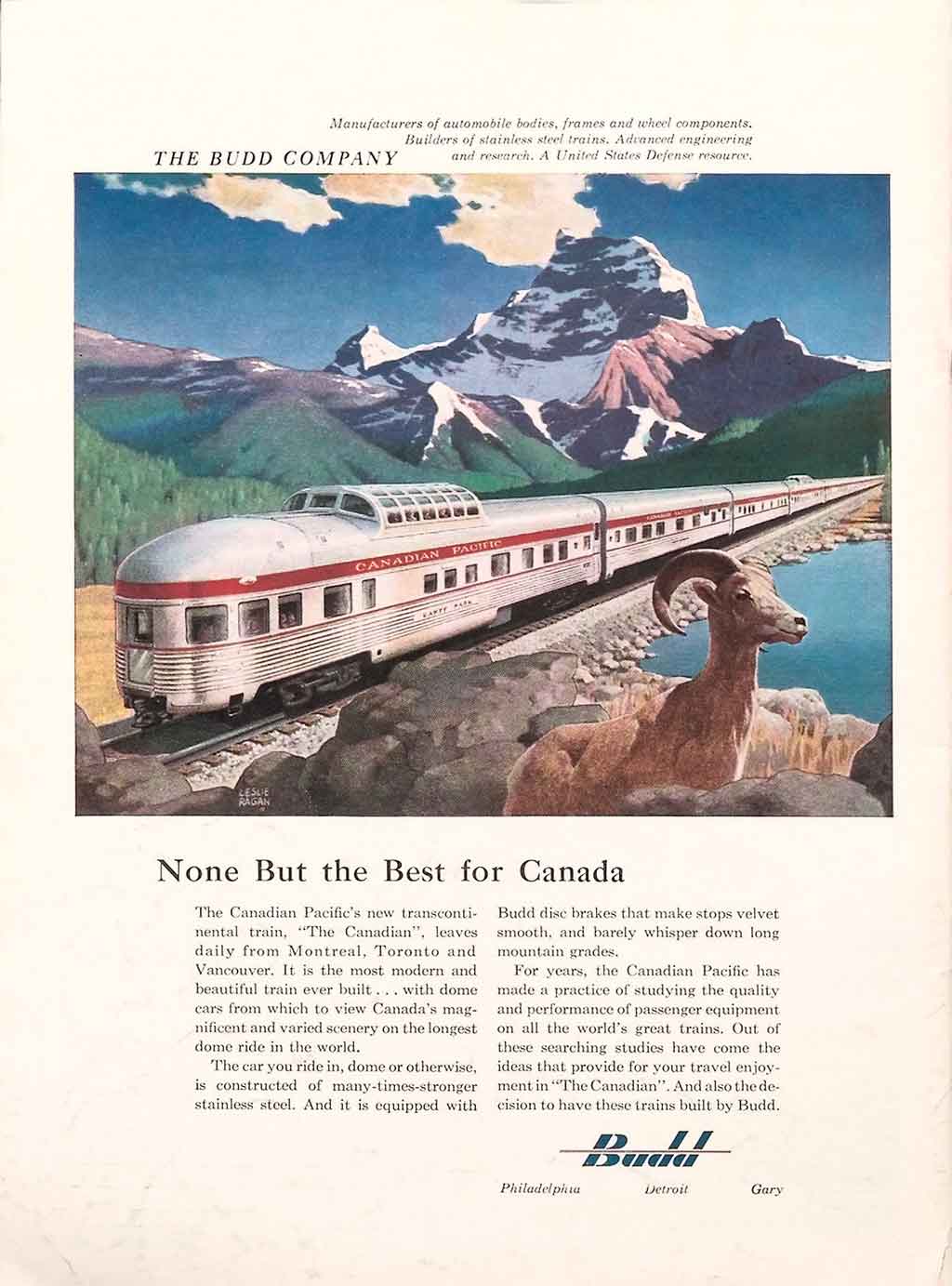
By 1950, the Canadian Pacific Railway rostered a ragtag fleet of heavyweight and lightweight cars for its transcontinental runs between Montreal, Toronto, and Vancouver. Seeking the postwar and tourism boom, plus holding steady against the Canadian National Railway’s upcoming Super Continental streamliner, CPR took note from the U.S. in the form of stainless steel. Much like the 1949 California Zephyr, Budd pulled out all the stops with 173-built cars with the cream of the crop being the dome-observation-sleeper “Park Cars.”
Launched on April 24, 1955, the same day as the Super Continental, The Canadian left its competition in the dust as a revolutionary and iconic train for the country it traversed across. So much so that the name continues to roll under VIA Rail Canada, now on the CN mainline between Toronto and Vancouver. The bulk of the passenger cars from the 1955 debut remain in service today for the modern-day Canadian, a testament to the historic design and construction at the hands of Budd. From Bill Stephens: “The Canadian is the last great streamliner.” Though time for the aging equipment might be running out…
The Metroliner
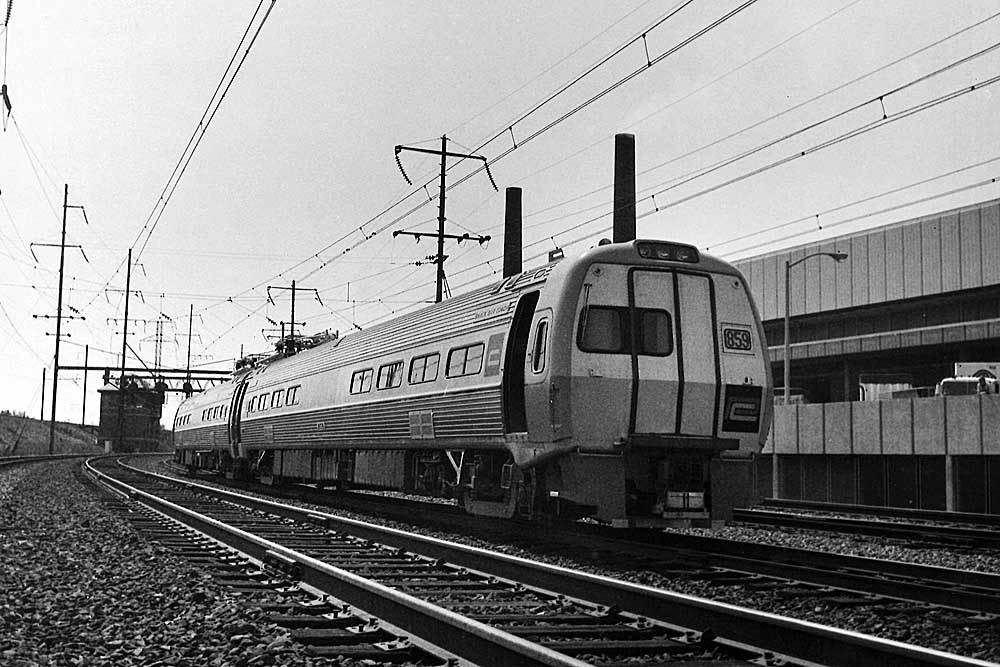
The twilight years were right around the corner when heading into the 1970s for the Budd Co. Yet the car manufacturer had a few more tricks up its sleeve. An evolution from the company’s Rail Diesel Car (RDC), the Metroliner was a self-propelled electric trainset to test and improve speeds along what was at the time Penn Central’s Northeast Corridor. More importantly, the 61 M.U. cars were ordered as competition to air travel for the business market. Beginning regular service on Jan. 16, 1969, it achieved all that and more as America’s first high-speed train.
Reliability issues might’ve plagued the trainset at the end of its short lifespan, but what ultimately came out of the Metroliner has benefited both the Northeast Corridor and Amtrak since the 1971 stewardship. First, the renowned name and brand stuck to the New York-Washington service well into the turn of the 21st century. Secondly, and the most important, the car design became the template for what was a long-running backbone to Amtrak’s fleet of single-level, passenger cars: Amfleets, built prominently by Budd beginning in the early 1970s.














Reading Company’s 5-car Crusader was the first trainset made by Budd and delivered in 1939.
Correction: Budd delivered Crusader trainset and Reading started service in 1937.
Noticed caption under first photo –
“Santa Fe’s 1937 Super Chief was, for its time, the ultimate streamlined, luxury train. Its sleek lines radiated from the front of its new EMC locomotives. General Electric photo”
Interesting that the picture prominently shows Electro Motive Corporation locomotives, yet it is attributed to General Electric Corporation.